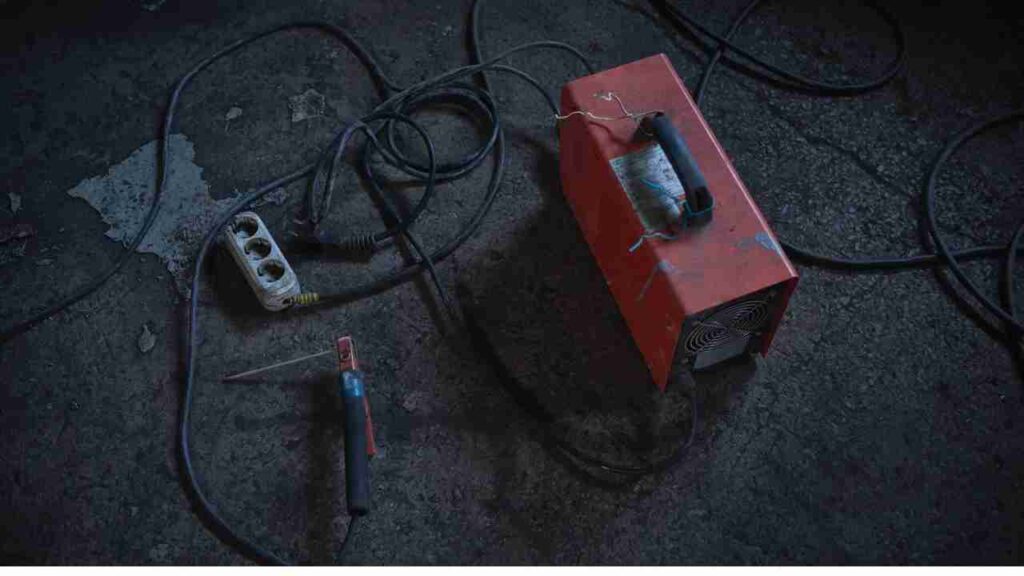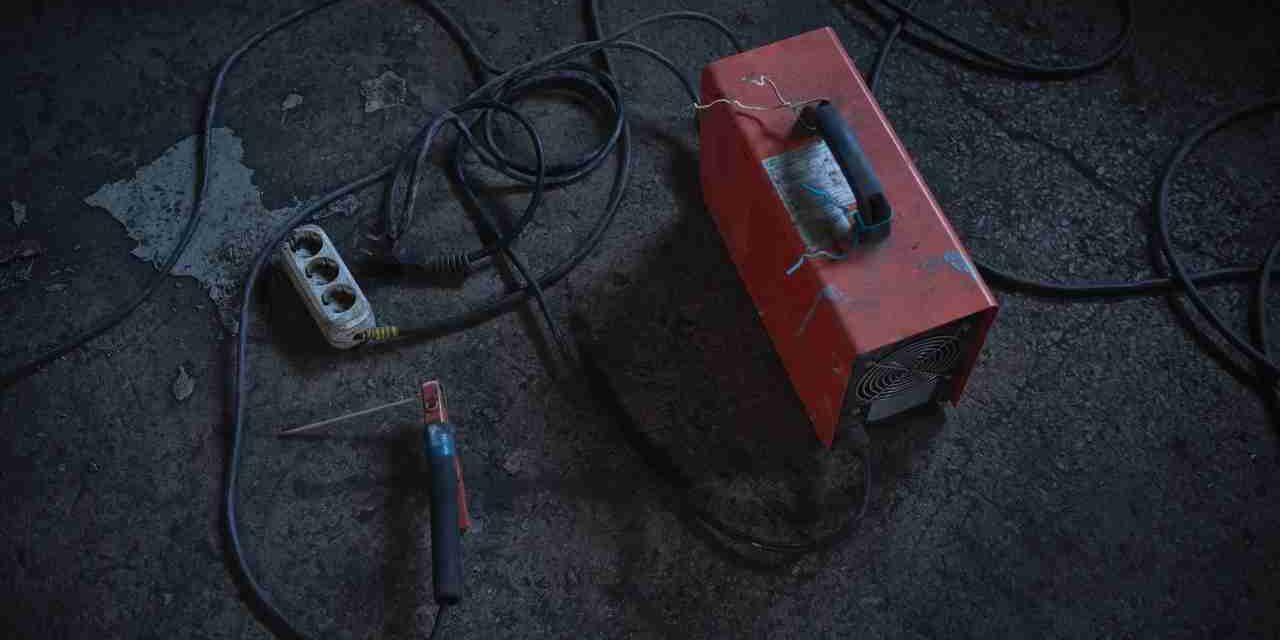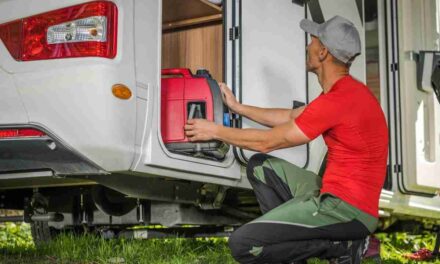
As a way to get an alternative power supply apart from the grid, people install a solar power system in their houses. Unfortunately, solar panels generate only DC (direct current). And virtually all electrical appliances support AC (alternating current). So, you need a power inverter that will convert DC to AC.
In other words, a solar power system is incomplete without a power inverter. This is applicable to people who are using solar power systems in their RV or van.
They also need an inverter. Like every other device, a power inverter can develop some minor faults or major faults. You may be able to repair the minor faults.
This is why we have come up with this write-up. We discussed some of the common faults that power inverters develop over time. To fix any problem with your inverter, you must troubleshoot it to get to the root of the problem. This is why we have given you tips on how to troubleshoot your faulty inverter.
In addition, we also outlined some effective ways of solving some inverter issues. Most importantly, we have also given some tips on how to take good care of your inverter to prevent it from developing a fault. One thing that you have to bear in mind is that inverters are available with different quality levels.
Some of them have a higher quality than others. Unfortunately, you cannot tell the quality of a power inverter just by looking at it. So, we have given some tips on how to purchase high-quality inverters. Please take the time to read it through to the end.
Can Power Inverters be Repaired?
Yes, certainly! All power inverters can experience technical dysfunction at one point or another, but they would always be found reparable except if the unit has turned to scrap. There are two ways of repairing power inverters.
It could be by yourself or giving it to a professional to repair. What’s required is identifying the defective parts so that the approach to the solution can be straightforward. Now, the identification of the faulty parts is left for the professional to detect.
10 Common Problems with a Power Inverter and How to Fix Them?
1. Power Inverter Making Noise
Of course, a power inverter makes some noise. That’s normal. However, it becomes a problem when the noise increases or when you hear a strange noise coming from it whenever you switch it on. The noise is probably coming from the fan.
At this juncture, we will like to inform you that any fault your inverter has will continue to get worse if not checked. In fact, it may cause you much more if you allow it to drag on.
Remember, a stitch in time saves nine. Also, carrying out routine checks on your inverter may help you spot a potential fault and avert it. To fix this problem, put your ear close to the fan when your inverter is on. If it is the fan, then it may be clogged with debris.
Try to clean it. If it is still making noise, try to grease it. If, after that, the noise persists, you may need to replace the fan. A noisy fan is an indication that it is not blowing your inverter properly. So, you should replace the fan before overheating damages some components of the inverter.
2. Display of Wrong Information
Every inverter comes with an LCD display unit. This unit displays important information about your inverter. It displays current voltage, the current battery level, and several other pieces of information. It is possible for your inverter to display wrong information.
In fact, the inverter we use in our office once displayed “Night Mode” during the day. Two causes of this problem are faulty internal circuit and wrong connection of cables.
The first step is to check the cable connections. Correct any wrong connection. If that does not solve the problem, you need to check the internal circuit or replace it. This is beyond you. It is better to hire a professional for this.
3. Alarm Sounds Continuously
The alarm of a power inverter sounds as an alert. For instance, when you overload your power inverter, it will sound an alarm before shutting down. Another common fault with an inverter is a continuous sounding of the alarm without any reason.
To handle this problem, you must first check the inverter. There may be a good reason for the alarm to sound continuously. Remove some of the load on the inverter to confirm if the problem is caused by overload. If reducing the loads does not resolve the problem, check if the fan is working.
The fan is meant to blow the inverter to avoid overheating. If the fan is stuck, the inverter will get hotter than usual. This may be the cause of the continuous sounding of the alarm.
If the fan is working perfectly and the alarm is still sounding, you may consider it as a fault you can’t handle. Contact the supplier or manufacturer. Stop using it until the alarm is fixed. Don’t let it damage another component.
4. Working in Only Inverter Mode
If your solar power system is meant to be a backup for the grid, your inverter is supposed to switch to the grid once power is restored. It is possible for your inverter to get stuck in the inverter mode. In that situation, when power is restored, your power inverter will remain in inverter mode.
High voltage or low voltage can cause this problem. If the voltage restored is very low or too high, your inverter will maintain the inverter mode. It is programmed to work that way. This is to save your appliances and your whole power system.
Check if the voltage of the power from the grid is normal. If it is, you can reset your inverter. That should solve the problem. If it does not resolve it, you may need to call a professional in.
5. Shortened Backup Time
If the runtime of your power system shortens without you adding an additional load, it is a sign that one of the batteries is not working properly. Inspect the batteries to spot the faulty one(s). If you replace or repair the faulty batteries and the problem still persists, the faulty batteries may have affected the inverter. Call a technician.
Also, it is possible for this problem to occur even when your batteries are okay. If you inspect the batteries and they are all fine, you should call a technician. It means the problem wasn’t caused by faulty batteries.
6. Batteries not Charging
It is possible for your batteries to stop charging. When you notice this, you need to check if your batteries are dead or not. Dead batteries don’t charge. If your batteries are okay, but they still don’t charge, it could be caused by a loose connection. Check for any loose connection.
If none, then it may have been caused by a corroded terminal. Disconnect and wash all the terminals of all your batteries.
If that still does not solve the problem, it may be that a fuse has melted or your rectifiers are burnt. Both of them are beyond you. Call a professional to come and troubleshoot your inverter and solve the problem.
7. Inverter not Turning on
When you switch your inverter on, and it does not turn on, there are several reasons that could have caused this. First, the inverter switch could be defective. The inverter could have tripped off. Also, the battery terminals could have disconnected.
Or the batteries could be too weak to power the inverter. Check for all these possibilities and correct them. If they are not the cause, then it is a more serious issue. Contact the supplier, the manufacturer, or call a certified professional to handle the issue.
8. Blown Fuse
The fuse in your inverter is meant to protect your inverter and your appliances. When a short circuit occurs or when there’s a power surge, the fuse will be blown, and your inverter will shut down. The inverter will never come up until you replace the fuse.
The solution to this problem is obvious. Replace the blown fuse. You may find it difficult to locate the fuse. The position of the fuse is different in different inverters. So, we can’t really direct you on that. If you can’t locate it, just call a professional.
9. Rapidly Discharging Batteries
If you notice that your batteries discharge rapidly, maybe they were not fully charged before. Try to charge them fully. If the problem repeats itself, then it means that one or more batteries can no longer hold a charge. Try and replace or repair the faulty batteries.
10. Aging
When your inverter is approaching its lifespan, it will keep giving different problems. When you fix one, another one will come up shortly after. If you encounter that situation, find out the lifespan of your inverter from your supplier and check how long you have been using it.
If it is approaching its lifespan, we will advise you to replace it rather than repairing it. That being said, you should also bear it in mind that proper care can extend the lifespan of your inverter, while poor maintenance can shorten it.
What Would Cause a Power Inverter to Stop Working?
Often, the problem comes from the power button’s contact. The spring that binds the two contact points to each other and compelled them to move back and forth is a delectable one. It could be seen on the printed electrical circuit when removing the encasement.
However, if peradventure the contact points aren’t functional after plugging the power cord in an electrical source, the power button is faulty. Under-voltage and overvoltage are common causes that make the power of an inverter to trip.
However, other factors could prevent a power inverter from working and that could only be fathomed by a professional or experienced personnel. Check out some other components on the unit to ascertain the elements that require replacements. Buy the necessary replacement parts of the unit with the same voltage rate and make your replacements.
Does a Power Inverter Have a Reset Button?
Yes, it does. Every power inverter has a reset button, often different from the power button. Other professionals call it the trip reset button. What this does is that it reconfigures the system to troubleshoot the thwart or electrical distortions in the circuit, which might be causing the power to stop abruptly.
Read the product’s manual to know where the reset button is situated on the unit. It could be at the front or the rear part of the unit. The button often has inscriptions for easy identification.
How Much Does It Cost to Repair a Power Inverter?
The repair of a power inverter differs based on its capacity and its value in the marketplace. The cost range of repairing an inverter is between $100 and $1,500. Also, another factor that predicates the cost of repairing a power inverter is the service terms and conditions of the repairer. The cost of buying defective components and the cost of services would also determine the cost of repairing a power inverter.
Causes of The Problems with Power Inverters:
Here are some of the causes of inverter issues. Although we have mentioned some of the above, it is necessary to discuss them now.
Loose connection – When any of the connections to the battery becomes loose, there will be a problem. The inverter may not work, or the batteries may not charge. So, you should always check the connections of your terminal to be sure that they are tight.
Terminal corrosion – When any of the battery terminals corrode, its connection may not be effective. It is just like a loose connection. Whenever you notice this, turn off your inverter, disconnect the batteries and rinse the corroded terminals. Don’t wait till it affects your inverter before you wash the corrosion off.
Battery problems – Dead batteries can affect the performance of your inverter. So, it is necessary to check your batteries always.
Low and high voltage – Every power inverter is designed to work at a particular voltage range. If the voltage gets too low or higher than the safe voltage, it could damage your inverter.
Overheating – Another common cause of inverter problems is overheating. You may not know when the fan blowing your inverter stops working. Of course, your inverter should shut down when the heat is too much. Sometimes the heat sensor may fail to trigger a shutdown.
Other times, a component may be damaged before the inverter shuts down. This is why you must always check the performance of the fan and also check the temperature of the inverter. Its display unit usually displays the temperature. Most importantly, your inverter should be placed in a well-ventilated place.
Overload – This is caused mainly by human negligence. Many people don’t keep tabs on the amount of load on their inverter. They just plug in any appliance with the belief that the inverter will shut down if it can’t carry the loads. If you’re among people who do that, we have news for you. Overloading your inverter shortens its lifespan.
Power surge – Power surge sometimes occurs. This is beyond your control. When this occurs, the fuse in your inverter will blow off, and the inverter will not work until the fuse is replaced.
Capacitor wear – This is more like an aging problem. When the capacitor of your inverter wears to an extent, it can cause inverter failure. This often happens when your inverter is getting old.
How to Take Care of a Power Inverter?
Here are some simple ways to take good care of your inverter so that you can avoid some of the problems discussed above.
1. Keep it out of The Reach of Children
If you have kids at home, don’t assume that they won’t tamper with the inverter. If they don’t do it in your presence, they are likely to play with it when you are not at home. Its LCD display unit attracts them. So, put your inverter in a place where you can secure it.
2. Ventilation is Important
You already know that your inverter can generate a lot of heat. This may get worse when you install it in a place with poor ventilation.
That’s why we will always advise you to install your power inverter in a place with good ventilation. This is very important as proper ventilation will put your inverter in a perfect condition for a long time.
3. Wash the Battery Terminals Regularly
The battery terminals often get corroded and rusty. So, you need to wash them regularly. You can make it once a fortnight. You know we also discussed that the terminal heads sometimes loosen up.
Washing the terminals will prevent it because you will disconnect them before washing them and tighten them after washing them.
4. Don’t Overload it
Don’t overload your inverter. Take the time to know the amount of power each of your appliances consumes. You should also know the power limit of your inverter. It is when you know this that you can avoid overloading it.
We understand that most inverters are programmed to shut down when overloaded. Nevertheless, you should still avoid overloading your inverters.
5. Don’t Manage a Faulty Battery
When you discover that a battery is faulty, it is better to fix it or change it. When you keep using it, other batteries will be pushed beyond their limits, and this will reduce their lifespan.
6. Keep your Batteries Charged Always
Don’t wait until your batteries are almost flat before you charge them. You should always keep charging them as long as there’s sunlight.
If you continue to wait until they are flat before you charge them, you are already killing them gradually. They won’t last that way.
7. Never Skip Routine Maintenance
As explained earlier, you need to get every component in your solar power system inspected regularly. This ensures that all the components in your system are working perfectly. Also, it helps to detect and avert a potential problem. Remember, prevention is always better and cheaper than cure.
8. Don’t Tamper With Your Inverter
As much as we encourage you to know more about your inverter, we don’t advise you to dismantle it for troubleshooting. Also, never hire an unqualified person to fix it for you. If the manufacturer detects that it has been opened by someone who is not qualified to fix it, you may void the warranty on it.
Choosing a High-Quality Inverter
Generally, low-quality products don’t last as long as high-quality ones. It is the same with inverters. High-quality inverters can withstand more pressure than low-quality ones. They also last much longer than low-quality products.
So, if you’re going to purchase an inverter, it is better and safer to purchase an established brand. It may be more expensive than obscure brands, but you will be sure that you are paying for a high-quality inverter. Also, it is necessary to check the reviews of your preferred products to be sure that it is a good buys.
Finally, if it is sold on Amazon, check its Amazon rating. Don’t buy any inverter with a low Amazon rating. Don’t go for anything lower than 3.0 stars.
Final Verdict
To conclude this piece, get conversant with the common inverter problems and their likely solutions. Don’t just take note of the knowledge, practice it. You should practice all the problem-averting tips that we discussed above. Finally, don’t forget to share the knowledge you acquired here.





